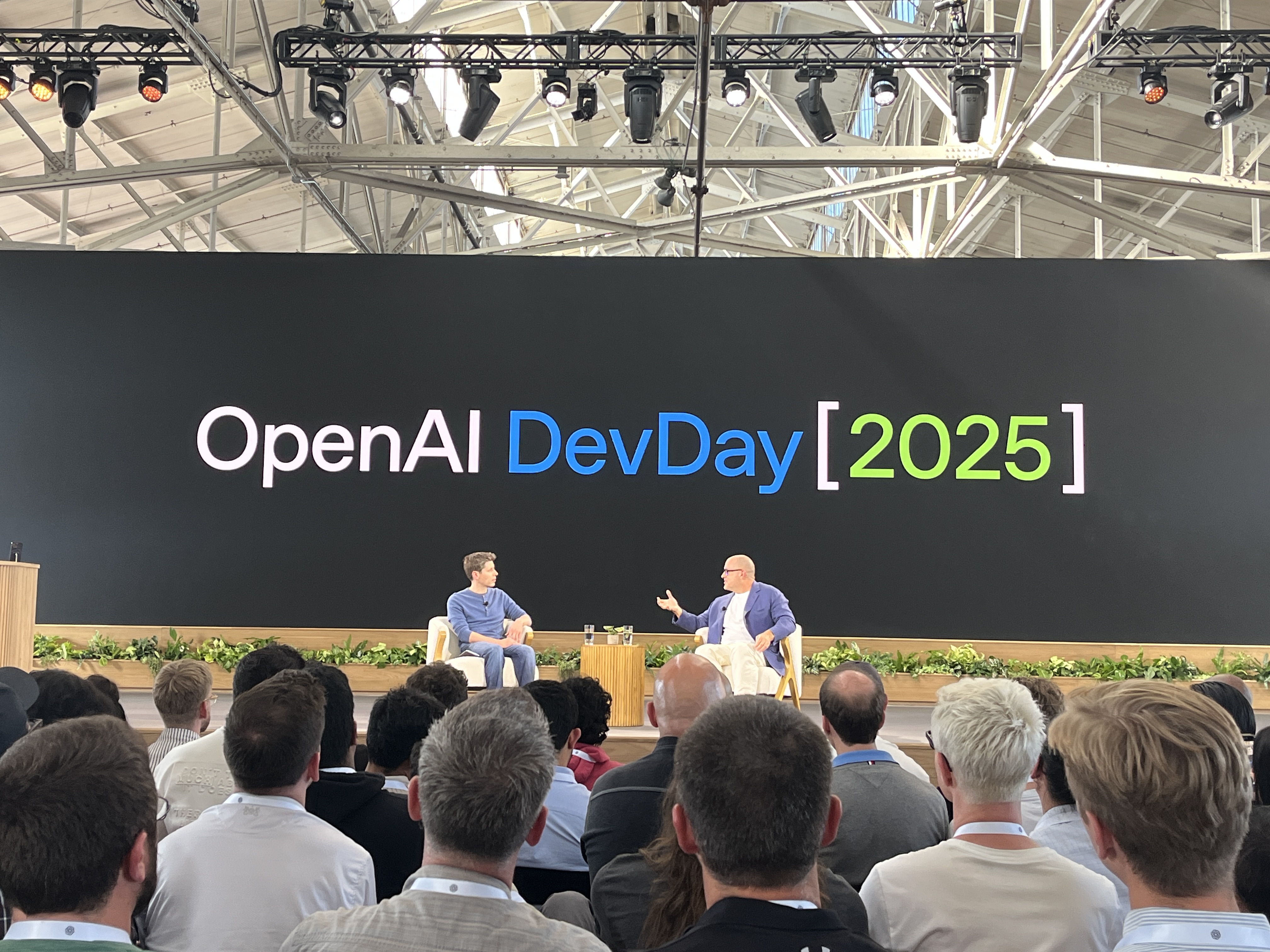When GPT-5 was announced, the tech world went wild. News sites, social media, and podcasts were full of excitement about this new AI model that’s smarter, faster, and better at understanding complex questions.
But if you’re someone building AI-powered apps, the real news was that OpenAI joined the open source fray with the release of GPT-OSS.
What is GPT-OSS?
OSS stands for “Open-Source Software.” Previously, if you wanted to power your app with OpenAI’s models, you could choose between building a custom GPT or using an API. With GPT-OSS, there is now a third option where the AI required to power an app can be downloaded and run locally on the end users’ device.
OpenAI has released two versions of GPT-OSS:
1. gpt-oss-120b (116.8B total parameters, 5.1B active parameters): Intelligence Index score of 58 - run within 80GB of memory
2. gpt-oss-20b (20.9B total parameters, 3.6B active parameters): Intelligence Index score of 48 - can run within 16GB of memory
In short, GPT-OSS is far from OpenAI’s ‘cleverest’ model, but its relatively small size means it can be run someone’s laptop or mobile phone which is a gamechanger for AI-powered apps.
What’s new with GPT-OSS
Open source models like GPT-OSS unlock three key breakthroughs for creators and developers who want to build apps using OpenAI’s models, compared to building GPTs or using the API:
- Data Privacy - the end user’s data is completely private, it does not leave their device. s that benefit from deeper integration with the user’s device e.g. access to local files
- Run offline - using GPTs or API connection both require pinging OpenAI’s servers which requires your app to be online.
- Zero Cost AI – until now, each time AI was utilised by an app cost money. With custom GPTs, OpenAI covered some AI usage cost before users are asked to upgrade to ChatGPT Plus. With apps that access AI models via API, the developer pays for token usage. However, with open source AI models that run locally, the AI usage cost is effectively zero so neither the user or developer has to pay.
Limitations of GPT-OSS
Early users of GPT-OSS have noted some pretty significant ‘flaws’:
- Latency – “Thinks forever” on consumer GPUs.
- Hallucinations – Higher tendency to generate inaccurate information.
- Reasoning Gaps – Struggles with multi-step logic.
It’s important to note that limitations will become less of an issue over time as AI models get more efficient and user devices become more powerful.
Paradigm Shift: A Change in How We Think About AI
For some app use cases, the aforementioned flaws are an absolute dealbreaker, and absolutely not appropriate. However, not every app needs a GPT-5-level brain. Many consumer applications work perfectly with smaller, lighter models that are faster and cheaper to run. The addition of GPT-OSS in the OpenAI model suite gives app builders the flexibility to choose the most appropriate way to utilise AI for the task or use case at hand.
Here are the cases in which using GPT-OSS may be favorable over a custom GPT or API access:
When privacy and trust are paramount
One of the biggest complaints about AI companies is data privacy. People don’t like the idea of their data, emails, photos and private notes being uploaded and / or being used to train AI models. In some contexts, this means that using certain AI applications is banned outright.
With GPT-OSS, the user runs AI locally on their device, meaning users can benefit from AI applications without worrying if their personal or sensitive data is being saved on a server somewhere or being used to train AI models.
This development may draw in a new user base for AI-powered applications who were resisting due to data privacy concerns, and also allow for more sensitive use cases that previously would not have been appropriate when accessing AI online (for example, uploading client information).
A new world of offline apps
App builders can now consider applications that utilise AI, but would be useful to access even if the internet is down, poor cell coverage or web access simply isn’t required.
Business Models Are About to Change
Traditionally, software had one main cost: building it. Once it was done, it was cheap to keep running.
Generative AI accessed online changed that, where there was a cost incurred every time someone uses the AI giving rise to complicated pricing models including message limits, tokens, credits, tiered account fees. It makes pricing complicated for platforms, developers and customers.
For custom GPT creators, it has been particularly painful because of the ‘double paywall’ scenario where users are asked to pay OpenAI for ChatGPT Plus to unlock higher message limits, even if the user has paid for a paid custom GPT. This double paywall issue has also made paid marketing almost cost prohibitive for custom GPT developers because you are essentially marketing OpenAI’s platform for them.
GPT-OSS flips that back:
- Run it locally and there is no per use cost
- With a simpler cost structure, app builders can have a correspondingly simpler app pricing scheme–perhaps a one time download fee or one monthly subscription
While GPT-5 grabbed the most headlines last week, GPT-OSS has quietly changed how creators can use AI to build useful apps. It’s not the most advanced AI yet, but it gives creators the ability to build offline apps, lower costs, and offer more privacy and that could be the real game-changer.
.svg)







